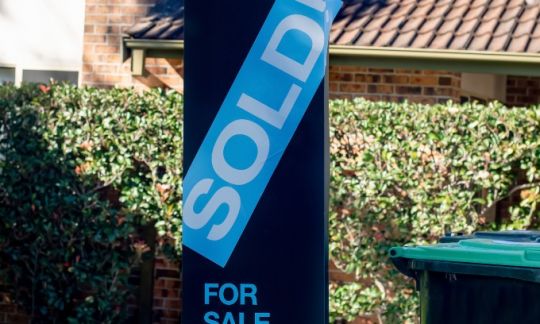Property market forecast – how far will house prices drop?

They’re the questions on many people’s minds – will house prices continue to drop in Australia and by how much? Reserve Bank of Australia (RBA) boss Dr Philip Lowe has predicted a further fall, but not necessarily to pre-pandemic levels.
2021 saw a significant increase in median house prices across Australia, with the boom driven in part by low interest rates. 2022 so far has seen the beginnings of a shift, with the RBA raising the cash rate to target soaring inflation, and sending interest rates rising with it.
Whether you’re a prospective buyer who has felt locked out of the housing market, or a homeowner wondering about the value of your property, the big question on your mind may well be what will happen to house prices now we are in an environment of rising rates.
How much could house prices fall by?
At an appearance before a parliamentary economics committee on 16 September, RBA governor Dr Philip Lowe said that he would not be surprised if prices fell by as much as 10%.
“Prices went up 25% over the past two years, [a] very big increase,” Dr Lowe told the committee. “It would not surprise me – and this is not a forecast – it would not surprise me if prices came down by a cumulative 10%.
“We don’t want to forecast housing prices, because it’s very, very difficult to do,” he continued, “but as interest rates rise further, and they will rise further, I’d expect more heat to come out of the housing market and prices to come down further.”
That’s not to say house prices will fall to pre-pandemic levels, though. Dr Lowe noted that, even if they do drop by the anticipated 10%, they will still have risen by 15% over three years.
Dr Lowe is not alone in predicting a fall in Australian house prices. ANZ economists have predicted a 5% fall by the end of 2022, and a further 10% drop in the new year. In May, ANZ predicted a 3% drop by the end of 2022 followed by an 8% drop in 2023, but revised these figures up in June based on forecasts about where the cash rate is headed.
ANZ expects prices to drop the most in Sydney, anticipating a decline of up to 20% in house values in the city by the end of 2023.
Where have house prices fallen by most so far?
CoreLogic’s national Home Value Index (HVI) report showed that this August, the average house price across Australia fell for the fourth consecutive month. The downturn of -1.6% nationwide makes this the largest month-on-month decline in property prices that the nation has seen since 1983.
The downturn has been greatest in Sydney, with values falling -2.3% in the month to August 2022, while values are also falling in Brisbane, which saw a boom throughout 2021, as many people relocated to south-east Queensland from southern states.
At present, Darwin is the only national capital not experiencing a downturn in house prices, while outside of the capital cities, regional South Australia was the only location to see an increase in housing values in the month to August.
The most recent ANZ CoreLogic Housing Affordability Report contained some potential good news for prospective home-buyers, saying that, thanks to the nation-wide drop in prices, the time needed to save a 20% deposit for a home has now fallen for the first time in two years around capital cities. As prices continue to fall, the time it takes to save for a deposit will also become shorter.
This good news, however, is tempered by other economic factors such as rising inflation and the ongoing cost of living crisis. CoreLogic research director Tim Lawless pointed out that the portion of annual household income required to service a new mortgage nationally increased to 44.0% in June, up from 40.4% over the March 2022 quarter. He said this would likely offset some of the improvements in other measures of housing affordability.
Recent home-buyers could bear the brunt of rising rates
While falling house prices may present an opportunity for some people looking to purchase, those who purchased a home for a premium price during the boom could see home loan repayment pain in months to come.
Following the RBA’s 50 basis point hike in September – the fourth such hike in as many months – Canstar finance expert Steve Mickebnecker told digital finance channel Walk The World that rising rates could see monthly mortgage payments double, leading some Aussies to face the prospect of mortgage stress.
Soaring inflation has seen the price of essentials like groceries and utility bills rising, and with no comparable growth in wages, some people will struggle to make ends meet when faced with potentially hundreds of dollars more per month in home loan repayments.
He said that the cumulative effect of the RBA’s recent rate rises ;could hit new homeowners the hardest, and that those who took out large mortgages more recently may struggle more than those who have owned their homes for longer, and had time to accumulate more savings.
“If you’ve owned your house for six or 12 months, you haven’t had time [to save], and you’ve [bought] at the time of sky high prices, they’re the people that are really going to suffer.”
How high will interest rates rise?
Based on the latest interest rate forecasts by Australia’s major banks, the current round of rate hikes could see the RBA cash rate climb to 3.35% by early 2023.
Canstar analysis shows that, if lenders pass this rate rise on in full, the average variable home loan rate in Australia could be 6.12%.
This means that Aussies with a $1,000,000 mortgage on an average variable rate could see their monthly repayments climb to as much as $6,073.
When the RBA began hiking the cash rate earlier this year, Mr Mickenbecker warned that Aussies could be facing a “cliff” when their fixed rate home loan terms end.
He said that Aussies who signed on to fixed rate mortgages between April 2020 and November 2021, a number he estimates to be around 500,000, could be most affected.
“Half a million borrowers could be facing a doubling and more of their home loan interest rate overnight, as they reach the end of their fixed-rate period,” he said.
If you’re currently nearing the end of your fixed rate, or even if you are just considering your options around refinancing your home loan, you can compare home loans with Canstar to see if you can find a lender offering a deal that meets your needs and circumstances.
The comparison rate for all home loans and loans secured against real property are based on secured credit of $150,000 and a term of 25 years.
^WARNING: This comparison rate is true only for the examples given and may not include all fees and charges. Different terms, fees or other loan amounts might result in a different comparison rate.

Up to $4,000 when you take out a IMB home loan. Minimum loan amounts and LVR restrictions apply. Offer available until further notice. See provider website for full details. Exclusions, terms and conditions apply.
 Owner occupied
Owner occupied
 20% min deposit
20% min deposit
 Redraw facility
Redraw facility
 Owner occupied
Owner occupied
 10% min deposit
10% min deposit
 Redraw facility
Redraw facility
 Owner occupied
Owner occupied
 30% min deposit
30% min deposit
 Redraw facility
Redraw facility
 Owner occupied
Owner occupied
 20% min deposit
20% min deposit
 Redraw facility
Redraw facility
 Owner occupied
Owner occupied
 40% min deposit
40% min deposit
 Redraw facility
Redraw facility
 Owner occupied
Owner occupied
 20% min deposit
20% min deposit
 Redraw facility
Redraw facility
Canstar may earn a fee for referrals from its website tables, and from Sponsorship or Promotion of certain products. Fees payable by product providers for referrals and Sponsorship or Promotion may vary between providers, website position, and revenue model. Sponsorship or Promotion fees may be higher than referral fees. Sponsored or Promoted products are clearly disclosed as such on website pages. They may appear in a number of areas of the website such as in comparison tables, on hub pages and in articles. Sponsored or Promoted products may be displayed in a fixed position in a table, regardless of the product’s rating, price or other attributes. The table position of a Sponsored or Promoted product does not indicate any ranking or rating by Canstar. For more information please see How We Get Paid.
Cover image source: Daria Nipot/Shutterstock.com
This article was reviewed by our Sub Editor Tom Letts and Financial Contributor, Collective Shift Sarah Petty before it was updated, as part of our fact-checking process.

Alasdair Duncan is Canstar's Deputy Finance Editor, specialising in home loans, property and lifestyle topics. He has written more than 500 articles for Canstar and his work is widely referenced by other publishers and media outlets, including Yahoo Finance, The New Daily, The Motley Fool and Sky News. He has featured as a guest author for property website homely.com.au.
In his more than 15 years working in the media, Alasdair has written for a broad range of publications. Before joining Canstar, he was a News Editor at Pedestrian.TV, part of Australia’s leading youth media group. His work has also appeared on ABC News, Junkee, Rolling Stone, Kotaku, the Sydney Star Observer and The Brag. He has a Bachelor of Laws (Honours) and a Bachelor of Arts with a major in Journalism from the University of Queensland.
When he is not writing about finance for Canstar, Alasdair can probably be found at the beach with his two dogs or listening to podcasts about pop music. You can follow Alasdair on LinkedIn.
The comparison rate for all home loans and loans secured against real property are based on secured credit of $150,000 and a term of 25 years.
^WARNING: This comparison rate is true only for the examples given and may not include all fees and charges. Different terms, fees or other loan amounts might result in a different comparison rate.
 Owner occupied
Owner occupied
 10% min deposit
10% min deposit
 Redraw facility
Redraw facility
Try our Home Loans comparison tool to instantly compare Canstar expert rated options.
The comparison rate for all home loans and loans secured against real property are based on secured credit of $150,000 and a term of 25 years.
^WARNING: This comparison rate is true only for the examples given and may not include all fees and charges. Different terms, fees or other loan amounts might result in a different comparison rate.





